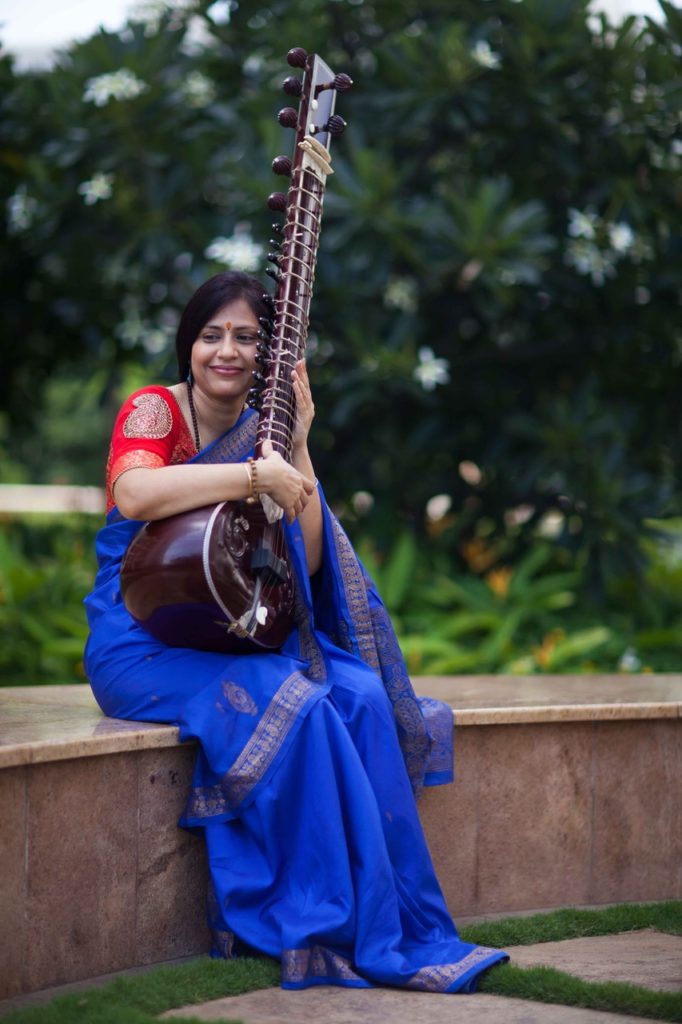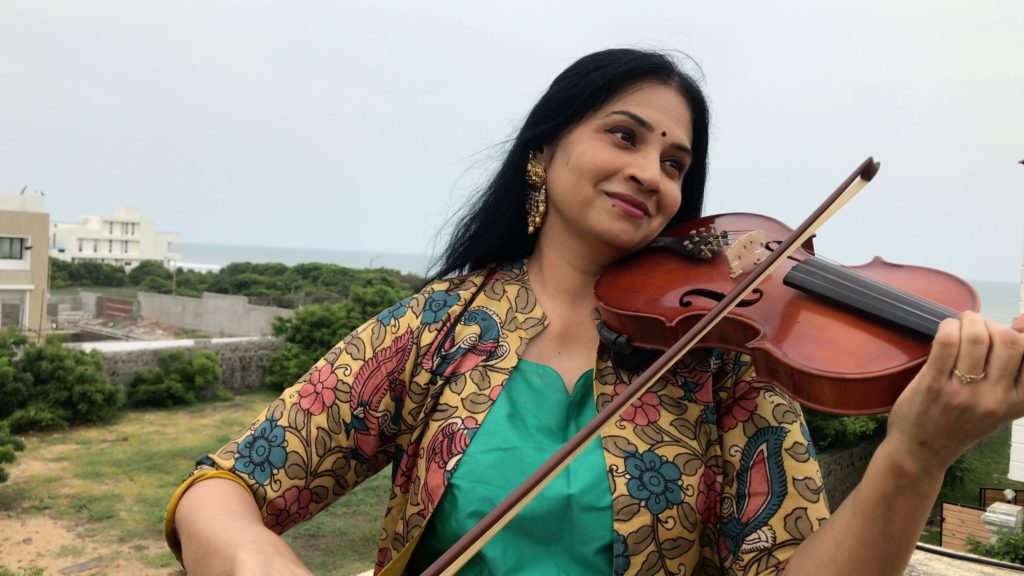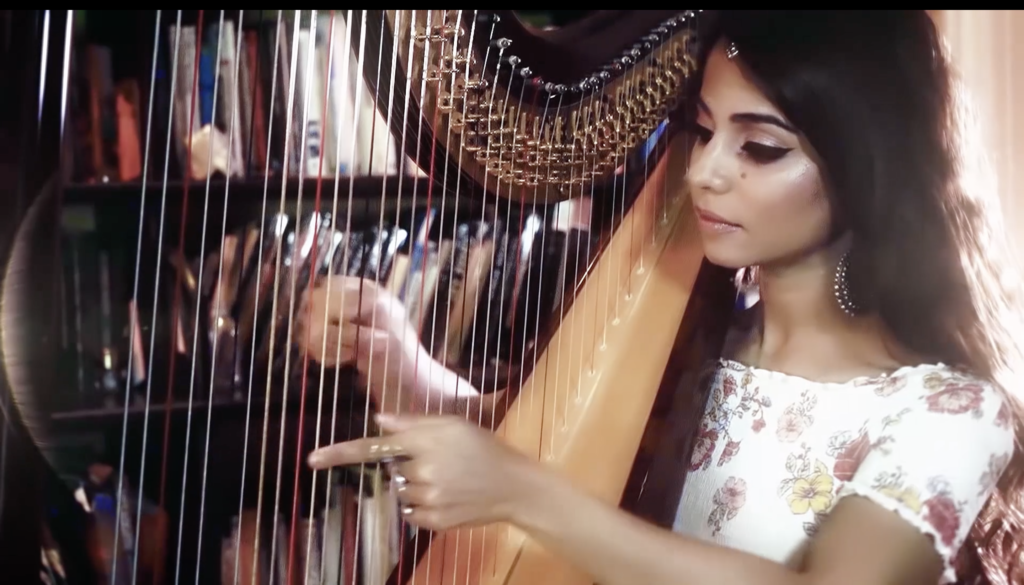From Ghatam to the Violin: The Instrumental Women Behind Indian Instrumentalism – Score Short Reads
Be it Western or Indian classical (Carnatic/Hindustani), instrumentalist compositions have been the mainstay of Indian music for ages. Once the domain of just men, the instruments have gradually fallen into the hands of more and more women over the years who are carrying forward a musical legacy while reinterpreting it in their own ways.
Rasika Shekhar, for instance, is a leading proponent of the Indian bamboo flute aka bansuri. Her fascination with the instrument was accidental as she recounts, ‘When I was 7 years old, I found a small flute in the balcony of my aunt’s apartment and that sparked my curiosity. When we moved to the US, my mom enrolled me into flute lessons with my guru and the journey began.’

In the United States, she received training under Dr. Bhavani Prakash. Other eminent flautists like Pandit Hariprasad Chaurasia also served as inspirations, as she spent hours watching their videos and mastering her craft.
As most of the revered figures in flute music were still male, it’s clear to see that Rasika Shekhar is changing the dynamics. ‘Meeting young women, girls, teenagers after concerts who tell me they’ve started learning the flute after listening to my music. They’re truly huge moments. It’ll be beautiful to see more women instrumentalists in the world, breaking past any barriers and stereotypes we face.’ She says candidly. Today, her music’s genre ranges from Carnatic to Jazz to Fusion, and so on. She also wishes to diversify her skills with a desire to master the ornamentation of Irish flute music.
Sukanya Ramgopal has similarly carved a niche for herself with the percussion instrument ghatam, the clay pot that’s integral to South Indian music. Initially, in her childhood, Ramgopal was a violin student but the neighbouring mridangam class piqued her interest. And then, the ghatam became her calling even though she, of course, had to work hard to not just learn the instrument but to prove her musical capability as not many women played the ghatam in the first place.

She explains her initial stages as follows, ‘I requested Sri.T.R.Hariharasharma Sir (father of Sri. Vikku Sir) to teach me. He immediately accepted me as his student. With 3 years of rigorous practice and classes, I started playing for small concerts. I used to go with Vikku Sir to listen to his concerts.
I was mesmerized by his playing and requested him to teach me ghatam. But he refused by saying that it would be difficult for me, as a girl, to produce sound on a clay pot. I persisted. About that time, Vikku sir went to teach at Berkeley University.’ However, after the Grammy-award-winning ghatam maestro Vikku Vinayakram came back to India, he was surprised at her progress and immediately took her as his student, abandoning all gender stereotypes of the past.
Even though technique is important for every instrument-practitioner, Ramgopal’s four-decade-old career now sees her discovering new expressions and techniques that she passes on. Otherwise, she feels her approach to playing is hardly technique-oriented.
Naturally, she has gained a cult following amongst aficionados of Carnatic music. Her approach with the ‘clay pot’ shatters notions of the stereotypical ‘fragile’ woman who once couldn’t play such instruments. Achievements like applause-driven shows and the Sangeet Natak Akademi award further make her journey worthwhile.
‘Being a woman in the music scene I think the best thing that happened was meeting some great women who are doing extremely well musically and professionally. I really enjoyed the interaction with them discussing their wonderful journey, while totally relating to many challenges they would have experienced too.’ This is how sitarist Anupama Bhagwat sums up the positive aspects of her career.
Of course, a few judgmental audiences raise their head every now and then. ‘Occasionally, I hear “For a woman you are very good”. I try to ignore such back-handed compliments – as I firmly believe in hard work and perseverance, and let the music speak for itself.’

Bhagwat had initially started learning the violin, owing to her father’s skills as a violinist. However, when her uncle gifted her a sitar when she was just nine-years-old, her interest sparked and she felt a divine intervention as the sitar seemed to have ‘chosen’ her. ‘To be able to traverse the Raga while connecting with the audience is a beautiful journey in itself.’, she adds.
She later gained expertise under Shri R.N. Verma, while undergoing training for over 20 years. When asked if there’s a particular technique of the sitar that she would like to master now, Bhagwat elaborates on how her tryst with the instrument is an ever-lasting journey. ‘This is an ongoing process and I look forward to enjoying this learning through my performances of this art form with different audiences and different themes more and more.’
Violinist Padma Shankar seems to bear similar views as she also sums up the future of her career as ‘The learning still continues. The training under my gurus has given me the skill to be able to learn and upgrade all the time. I am now exploring how to adapt my style of music to express different genres.’
For a large part of her early years, violin maestro Sri. Lalgudi G Jayaraman trained her in Carnatic music even though her first teacher was her own mother who saw potential in her as a violinist. Apart from her guru, she also looks up to Sangita Kalanidhi Kanyakumari and Dr. N Rajam whom she describes as ‘sterling women violinists’. ‘All of them have paved a distinct path for us to look up to and follow. There are many others who continue to inspire me.’

Aside from such instrumentalists, Nirupama Belliappa dons many hats as she plays the Concert harp, the Western concert flute, and the classical guitar. Even though she taught herself the latter, she went on to train classically on piano, the harp, and the flute. She has attained popularity and has had her fair share of high moments in her career as she recounts her time when she chaired a session on underground electronic music at a music conference called WOMEX in Spain.
The session discussed the origins of dance music and clubs as safe spaces for communities who were marginalized in other areas of mainstream society. This eventually helped her connect with a collective of female electronic artists from around Europe, Asia, and South America, filling her with inspiration and hope.

As for her own instrumental prowess, Belliappa seeks to change the general notions of the harp. As she puts it in her words, ‘I want to find ways to take the harp out of context – disrupt its traditional associations with purity and innocence – and also showcase a rawer, more primal and powerful side of its range and tonal qualities. I see the harp like a large flamenco guitar, with more range and resonance and therefore a whole other universe of possibilities.’







